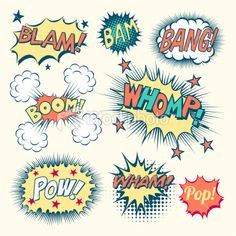Hello, all! Hope everyone's been doing well.
I wanted to write this week's blog post about the inclusion of the fossil splash page in Tezuka's
The Mysterious Underground Men (pp. 42 of the version published by Picture Box) and the similarity between this panel and elements of the
Animal Crossing Japanese gaming series. Although I can't say for certain, as I am by no means an expert in the field, I believe Tezuka's work may have served as an archetype for many Japanese manga and video games in terms of its inclusion of non-plot-driven educational excerpts. Whether or not
The Mysterious Underground Men was the first of its kind to throw seemingly unrelated educational panels into the middle of the story, we can still draw many meaningful connections from the similarities between Tezuka's work and the
Animal Crossing series developed by Nintendo.
Firstly, I'd like to analyze the accuracy of the information presented on the splash panel on page 42. Assuming that the information presented in the English translation by Ryan Holmberg is identical to the information in Tezuka's original body of work, the data presented to readers on pp 42 is surprisingly accurate. I found that although many of the dates listed below the fossils were inaccurate (according to Google), all of the periods associated with the fossils were correct. Additionally, I should mention that all of the fossils do in fact correspond to real-life scientific discoveries. Beyond that, Tezuka's artistic renderings of all of the fossils possess an almost scientific accuracy. (see comparisons below)
Devonian Period Fish
Ichthyornis
Lepidodendron (Carniferous Period)
Trilobite
Tyrannosaurus Rex
Olenid Trilobite
Eurypterus
Triceratops
During our class discussion yesterday, it was noted that this splash page may have been included in the comic as way to avoid backlash claiming that comics were not academic or educational and as such not suitable for young readers. I think that is a great point, and certainly has its merits, but I believe that beyond that, this panel also serves to ground the entire story in reality. Without the educational splash page, we have a story with no roots in the real world - Mimio the talking rabbit, a train that goes through the center of the earth, and underground termite-people who happen to have no problem communicating with our protagonists in their native language aren't exactly commonplace in the readers' daily lives. However, by presenting audiences with scientific information that the reader knows to be fact, Tezuka skillfully merges the imaginary world of the story and the world that we live in. In my opinion, the splash page in question serves as a bridge between the world of the story and the world of the reader, and is of monumental importance.
The concept of presenting factual information in a fantastic setting is still present in Japanese media today. For example, in the Animal Crossing game series, players inhabit the role of a human who finds herself/himself accidentally moving to a town wholly inhabited by humanoid animals (similar to Mimio?). Although the goal of these games is simply to make friends with the villagers and earn money to customize your character and in-game house, many of the items acquired in the game can be donated to the village museum, which is operated by the town owl.Screenshots of average game play contrasted with museum game play below should remind you strongly of the relationship between page 42 and the rest of Tezuka's manga.
Above:Making small talk with a humanoid deer - not so believable
Below: Visiting the town museum - pretty similar to reality
If you go up to one of the plaques in the museum, it gives you specific information about the items in the exhibit. For example:
"The name stegosaurus literally means "roofed lizard" or "covered lizard." This name came from a belief at the time of discovery that it was covered in bony plates like a shell. We now know that the plates stood fully upright along its back and were covered in thick skin. Beyond protection from harm, they were likely used to regulate body temperature."
Another excerpt is taken from the art installation:
"Considered one of Vincent Van Gogh's most well known still life paintings, Sunflowers is generally considered the default name of this specific Arles Sunflower painting.
Although previous works regarding flowers had been created by Van Gogh in the past, the artist drew inspiration for a set of sunflowers while he was in Arles, France, which have since gained popularity due to its charming, yet simplistic appearances. Despite its quaint image, the Sunflowers first demonstrated Van Gogh's usage of pigments which were introduced around the 19th century, which were used to bring out vibrancy similar to that of actual sunflowers. "
This sort of true-to-life information present in fantastical worlds is an incredibly interesting artistic tool that is present both in Tezuka's work and in more recent Japanese media.
That's all for now. See you guys next week!
-Matt













